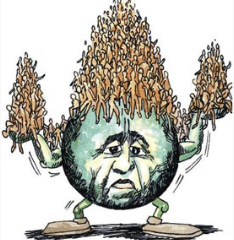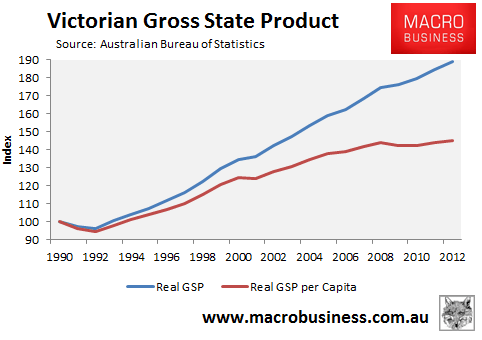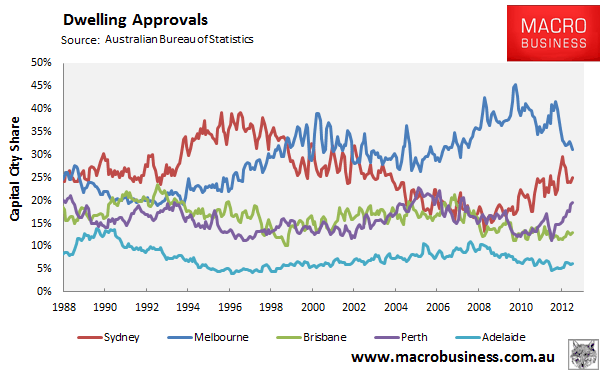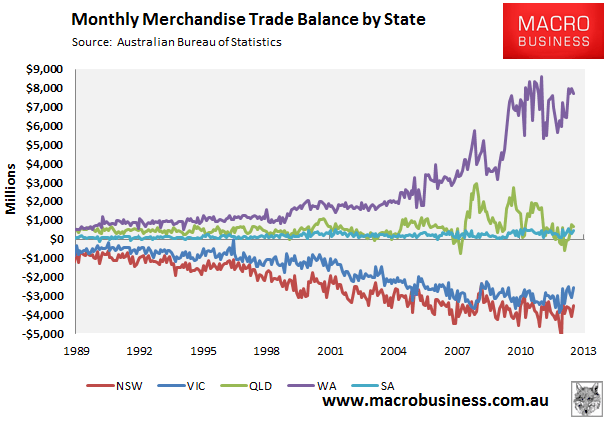
Tim Colebatch posted an interesting article over the weekend highlighting the massive population boom taking place in Melbourne. From the Age:
Melbourne’s population is swelling by 2 per cent a year, adding more than 900,000 people since this century began – and putting it on track to be a city of 8 million people by 2050.
The Bureau of Statistics estimates that in mid-2012, the city’s population was about to hit 4.25 million, after six boom years in which it grew by almost half a million.
Recent bureau figures imply that Melbourne today is home to 4.35 million people – and 27 per cent bigger than the city it was at the start of 2000…
With a rapidly growing population squeezing into road and rail systems that are barely growing at all, this would intensify the strain on the city’s infrastructure, leading to increased congestion on the roads and overcrowding on trains…
Melbourne had the largest growth of any Australian city over the five years…
In 2010, Monash University’s director of the centre for population and urban research, Bob Birrell, labelled Melbourne a “parasite economy” in reference to way in which the state sucks financial resources from the mining states in order to support its growing population:
”Increasingly, the fiscal dividend from Australia’s mineral boom is having to be distributed to Victoria to pay for the needs of Melbourne’s population boom”…
”While the other boom states have been driven by mining exports, Victoria’s boom has been driven by high immigration… This created a buoyant economy, thanks to a rapidly-growing people servicing sector and migrant servicing sector”.
In other words, Melbourne is growing for the sake of growing, racing towards a population of 5 million, using other people’s money. Just how big is that great sucking force from the south? Enormous. In the 2008-09 financial year, Victoria imported $70.2 billion in goods and services. It produced only $34.5 billion in exports, less than half its imports, a deficit of $35.7 billion…
”Melbourne now requires increased financial assistance . . . to pay for its city building to keep up with all this population growth,” Birrell says.
Birrell also argued that Melbourne’s population boom offered minimal benefits to the pre-existing population:
By far the greatest beneficiaries of high immigration are the immigrants, not the resident population.
High immigration lowers per capita productivity growth, a key to sustainable growth.
It retards the growth of per capita wealth.
It accelerates the rate of food importation. (Australia imported a record $8.5 billion worth of food in 2008-09.)
It accelerates the increase in urban overcrowding and traffic congestion.
It increases Australia’s greenhouse emissions, per capita.
It makes it unlikely Australia can meet its targets of greenhouse gas emission reduction.
It lowers Australia’s food security.




